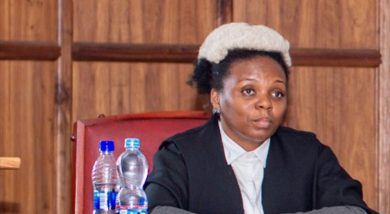Taming education inequalities: Is govt doing enough?
Malawi, in her quest to bridge inequalities in education, is signatory to a number of international policy frameworks.
Two of such frameworks are Education for All (EFA) and Millennium Development Goals (MDGs) adopted in 2000. The two frameworks put pressure on signatory countries like Malawi to ensure equity and address disparities or inequalities in the education system and the target was to reach that goal by 2015.

On the policy level, as expected, there has been great and adorable response. The National Education sector Plan (2008-2017), for example, has objectives aimed at addressing inequalities at all levels of education.
To put the wheels of the plan into action, Malawians have, over the years, seen a number of interventions in the education sector. We have seen the scrapping of tuition fees in primary schools; we have seen girls being re-admitted into secondary schools after being dropped-off due to teen pregnancies; we have seen teachers being trained in special needs education; and we have seen benchmarking in education financing and the reintroduction of the quota system. The list is endless.
However, according to Limbani Nsapato, an education scholar, not much has been achieved, especially in post-primary levels of education.

not implemented
“Some groups are underrepresented in sub-sectors such as secondary education, technical vocational education and university education.
“In most cases, girls and children with disabilities and children from rural and poor households or schools miss out,” he says.
As we approach 2017, researchers Stella Kaabwe and Lillian Kamtengeni tell us that 91 percent of students in Malawian universities come from wealthy families, while less than one percent (0.7 percent) come from poor families. This, unarguably, is a story of a great disconnection between policy and implementation.
Executive director of Civil Society Coalition for Education (CSCE), Benedicto Kondowe, shares the observation, saying this is because of poor implementation of policies.
“We have very good policies on paper yet there is just too little being implemented,” says Kondowe.
But why the disconnection?
Dr Steve Sharra, lecturer at the Catholic University of Malawi (Cunima), sees the disconnection from the lens of the policies which have always promoted elitist structures at the expense of disadvantaged people, even when reforms are attempted.
“When [Malawi] had tuition fees in primary school, the enrolment was so low, as a result, many Malawians failed to attend school. When free primary education was introduced and government failed to recruit enough teachers and provide adequate educational resources, we ended up with a system whose standards worsened than before,” he says.
He adds: “We have always had tuition fees for secondary school, with the consequence that more 72 percent of Malawians have never attained a secondary school education, according to the National Statistics Office’s Malawi Demographic and Health Survey 2010. The survey shows that only 18 percent of Malawian men and 11 percent of Malawian women have attained a full secondary school education.”
Sharra, unwaveringly, advances that government policies and their emphasis on elitist entitlements have made inequality even worse.
“This year’s university students’ strikes for an increase in allowances have uncovered the revelation that Malawi is the only country in the world where government-sponsored students in public universities are paid an upkeep allowance.
“Our expenditure per student in higher education is seven times more than the [Southern Africa Development Community] Sadc average. Meanwhile, we have more than 70 percent of the population who have never had the chance of attaining a secondary school education that could have significantly increased their earning potential, thereby reducing the inequality we are lamenting,” Sharra says.
While Nsapato, sees the disconnection, generally, as a product of lack of political will from those in decision making positions.
“We have, over the years, experienced poor financing of the education system which, in the process, has undermined affirmative action policies. For instance, Malawi still fails to allocate at least 20 percent of the total national budget or six percent of the gross domestic product [GDP] to education; and post primary education levels are not well funded, while programmes for girls and children with disabilities continue to suffer underfunding,” Nsapato observes.
He further notes that there has been disheartening poor targeting and inequitable distribution of resources to schools across the country.
“For instance, studies show that Northern Division and Central Division schools are better financed while the other four education divisions Shire Highlands, South East, South West are poorly financed. Towns have more teachers than rural districts where there are more children who need quality teachers.
“This inequitable distributing of resources has led to differences in unit cost per student to be in favour of the school, districts or regions that are better resourced. This could be heightened by lack of proper planning or use of education statistics in financing, as well as favouritism by those in control of resource distribution,” he explains.
Building on Nsapato’s lack of political will discourse, Kondowe argues that the disconnection is more a product of the country’s dysfunctional politics.
“Malawi has very good policies on paper yet there is just too little being implemented. Politics takes centre stage in education where good policies are at times abandoned for the sake of the ones that may sound politically correct yet not helping much in advancing deeper challenges in education.
“Sometimes good policies are not even known by stakeholders thereby rendering them ineffective,” he says. n





